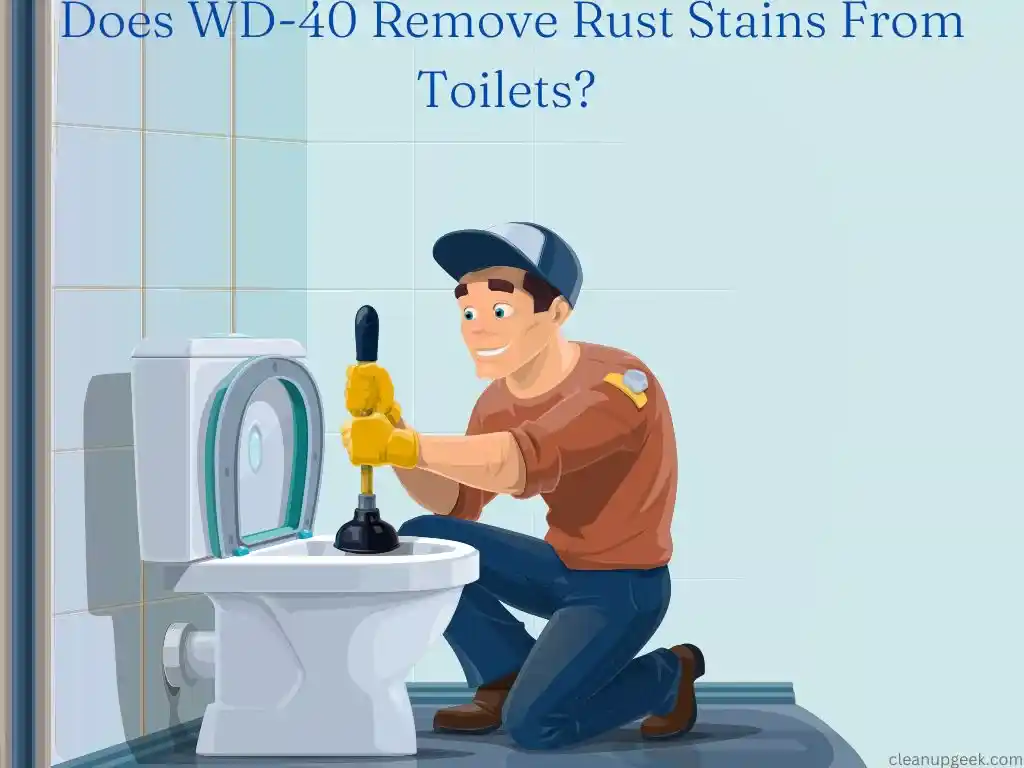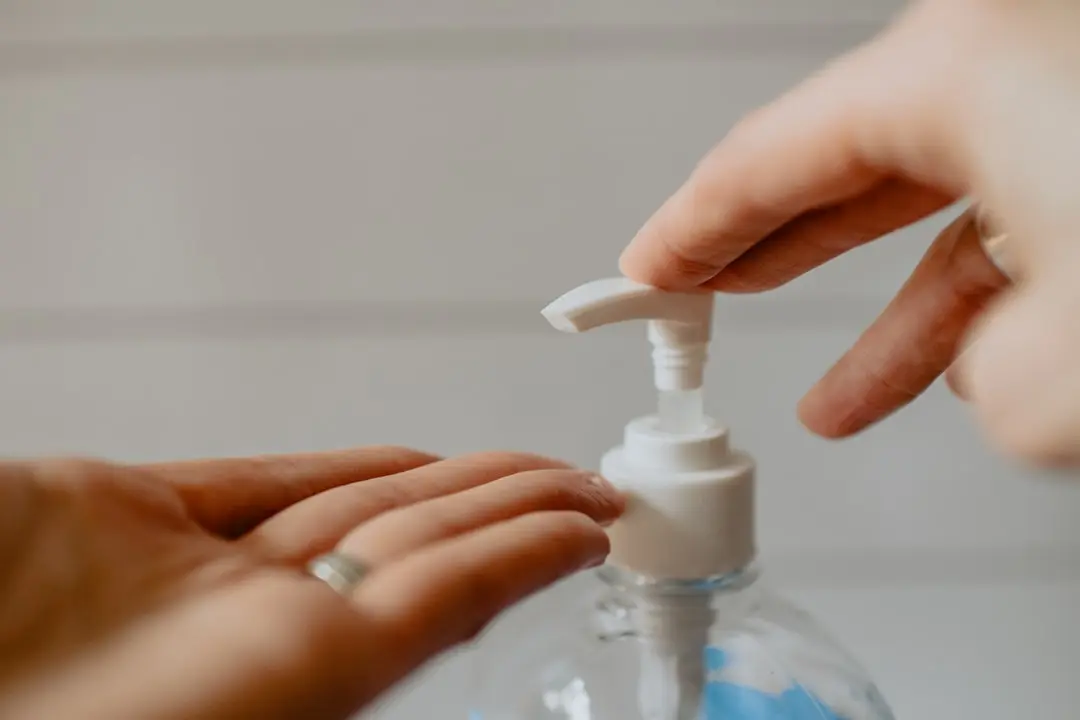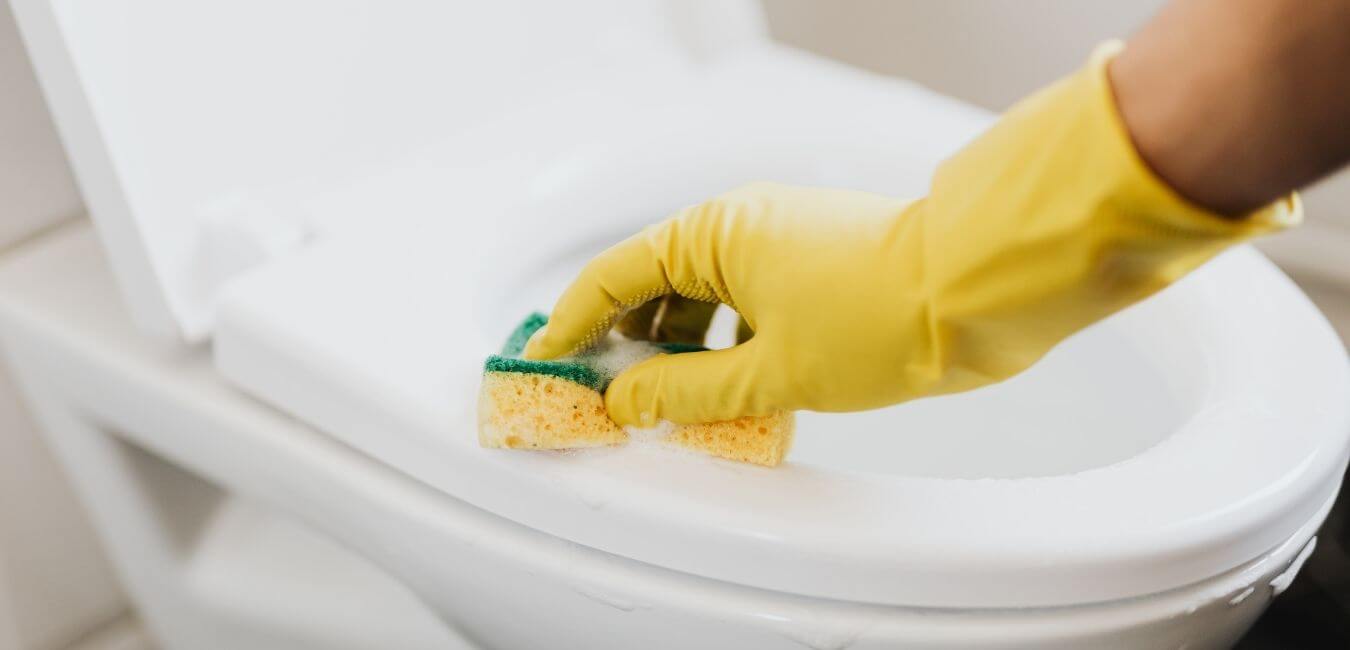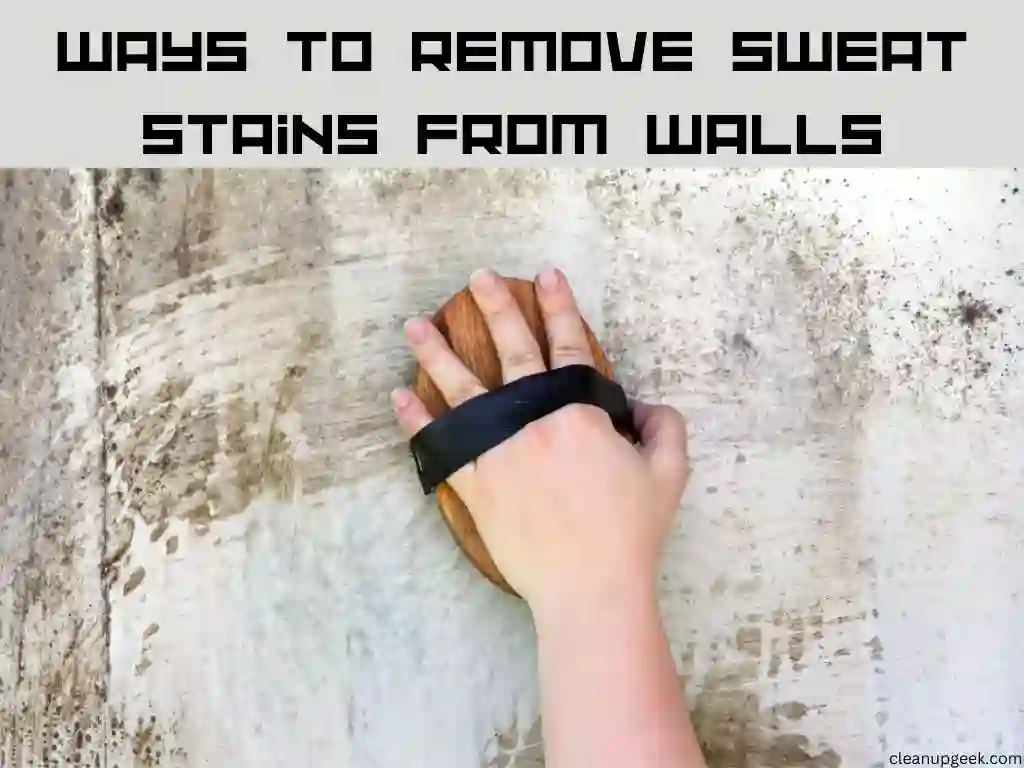Rust stains can be caused by a number of different sources, including hard water, iron deposits, mineral deposits, and rusty pipes. Rust stains in toilets are an unsightly and challenging problem to address, but many people have heard that the popular product WD-40 can help. So, can WD-40 actually remove rust stains from toilets?
WD-40 can remove rust stains from toilets. While WD-40 can help in some cases, it is not reliable enough to completely remove tough rust stains from toilets. For deeper and more effective stain removal, other products should be used instead.
In this article, we have tested some WD-40 products to determine which are the most effective at removing rust stains from toilets. After multiple tests, we can confidently report that only two WD-40 products have proven to be truly effective.
We will also provide step-by-step instructions on how to clean toilets with WD-40 if desired, as well as what other options may be available in case WD-40 didn’t work for you.
Does WD-40 Remove Rust Stains From Toilets?

Rust stains in toilets are a common problem that can be difficult to remove. This is why many people turn to WD-40, an all-purpose lubricant and cleaner, as a solution. WD-40 is widely used for various applications due to its ability to penetrate and dissolve rust. But does it work on rust stains in toilets?
WD-40 is a multi-purpose lubricant and cleaner that can be used to remove rust stains from toilets. It works by breaking down the bonds of rust molecules, allowing them to be scrubbed away more easily. The product contains lubricants, which help protect the metal from further corrosion and damage.
However, it is essential to note that WD-40 is specifically designed to remove stains and rust from metals and concrete. Therefore, the product is less effective when it comes to removing rust stains from toilets.
Furthermore, if the rust stains are older and have been allowed to set in for a long period of time, it may be necessary to use an abrasive cleaner such as an acid-based toilet bowl cleaner or baking soda.
The product is easy to use and can be applied directly to the affected area with a cloth or sponge. To ensure maximum effectiveness, it is recommended that you allow the product to sit for several minutes before wiping off any excess residue.
To use it, spray WD-40 onto the rusted area of the toilet and let it sit for a few minutes before scrubbing it away with a brush or sponge. This process may take several repetitions before complete removal is achieved.
If the stains are stubborn, you may need to repeat the process several times until they are gone. With regular use, WD-40 can help keep your toilet looking its best and prevent future corrosion and staining.
Check out this article: How to remove rust stains from vinyl sidings
Mistakes to Avoid When Using WD-40 to Clean your Toilet

WD-40 is an incredibly useful tool for fixing and maintaining items around your home. When using WD-40 to clean a toilet, there are certain precautions that must be taken in order to ensure the safety of yourself and others. Here are a few of them:
1. It is important to avoid breathing in the fumes of the product, as they can cause irritation and damage to your lungs.
2. You should never mix WD-40 with bleach or other harsh chemicals, as this could cause a dangerous reaction.
3. Avoid spraying WD-40 directly onto electrical components such as switches or outlets, as this could lead to a short circuit.
4. Do not use WD-40 on painted surfaces, as it may strip away the paint and possibly even corrode the surface beneath. Overall, it is important to use caution when using any chemical cleaning products, especially WD-40 for toilet cleaning.
5. You should always wear gloves while using WD-40 on any surface in general, even if it’s just a light coating, as it contains chemicals that can cause skin irritation if they come into contact with your skin.
How to Clean a Rusty Toilet with WD-40?

Cleaning a rusty toilet can be a daunting task, but with the right supplies, it can be made much easier. There are so many WD-40 products on the market, and using the wrong one to remove rust stains from your toilet bowl will not help.
We’ve tested some WD-40 products and realized that only two products are proven to be effective at removing hard water stains, mineral deposits, and rust stains from the toilet bowl.
The first product is the WD-40 EZ Reach, which works on light rust stains but does not work on tough stains. This has been trusted by people as an effective rust cleaner, and it did not disappoint when tested on toilet bowls.
The second product we found to be successful was the WD-40 Specialist Rust Remover Soak, which is perfect for stubborn stains on toilets. This unique product allows you to soak rusty toilets overnight before brushing off the rust with a toilet brush.
Here is how to use these products to remove rust stains from your toilet:
1. Using WD-40 EZ Reach
Materials needed:
1. WD-40 EZ Reach
2. Toilet brush, hard brush, or sponge
3. Warm water
4. Gloves
To use WD-40 EZ Reach on a toilet:
1. Start by wearing gloves. This is because the product contains harmful chemicals that may cause skin irritation when expose to the skin.
2. Spray the cleaner directly onto the stained area and allow it to sit for 1 to 3 hours.
3. After this time has elapsed, scrub the area using a toilet brush or sponge.
4. Rinse it off with clean, warm water.
5. If some of the stains remain, repeat this process until all of the rust is gone.
2. Using WD-40 Specialist Rust Remover Soak
WD-40 Specialist Rust Remover Soak is typically highly effective at removing stubborn rust stains from toilets. Here’s how to remove rust stains from your toilet using WD-40 Specialist Rust Remover Soak:
Materials needed:
1. WD-40 Specialist Rust Remover Soak
2. Hard brush or toilet brush
3. Warm water
4. Gloves
To use WD-40 Specialist Rust Remover Soak on your toilet:
1. Wear gloves throughout this process, as WD-40 is quite potent and could cause skin irritation if left on for too long.
2. Spray the WD-40 onto the areas that are rusty.
3. Let it sit overnight. This will aid in the removal of any rust and dirt particles that may have become lodged.
4. Afterward, use a hard brush or toilet brush to scrub away any remaining dirt and rust.
5. Finally, flash the toilet with warm water to remove any excess WD-40 and dirt.
With these steps, you should have no problem getting your toilet looking shiny and new again!
Warning: When using any of these cleaning products, always ensure that you wear protective gloves and eyewear and follow the instructions carefully.
How to Prevent Rust Stains from Forming on your Toilet Using WD-40?

To prevent rust stains from forming on your toilet, one of the best methods is to use WD-40 Specialist Corrosion Inhibitor. WD-40 Specialist Corrosion Inhibitor is a great rust-preventative spray for use in harsh environments, like high moisture areas. It provides non-drying protection that remains where applied.
Here’s how to protect your toilets from hard water stains, mineral deposits, and rust using WD-40:
1. First, you should shut off the water supply and flush the toilet to empty it.
2. Then, spray a generous amount of WD-40 Specialist Corrosion Inhibitor onto a cloth, paper towel, or rag and wipe it around the inside of the bowl, paying special attention to areas that may be prone to rust.
3. Allow the product to sit for 10 to 15 minutes before flushing again.
4. Finally, you can follow up by wiping down the outside of your toilet with a damp cloth and drying thoroughly with a clean towel.
By following this simple process regularly, you can help ensure that rust does not pose a problem in and around your toilet.
Check this article: How to prevent hard water stains from forming in toilets?
Alternatives to Using WD-40

Rust is a common problem for many products, from cars to toilets. While WD-40 has long been the go-to rust remover for many people, there are other options available that offer different benefits. Here are some alternatives to using WD-40 rust remover that you may want to consider.
Natural Remedies for Rust Removal
Natural remedies for rust removal are a great way to get rid of rust without using harsh chemicals. Here are a few natural remedies you can use to remove rust and toilet stains from your toilets.
1. White vinegar and baking soda:
This natural combination can be used to remove rust from metal objects, sinks, toilets, and other surfaces without any harsh chemicals or fumes. To use this method, simply mix equal parts of white vinegar and baking soda together to form a paste, apply it to your toilet bowl, and let it sit for 1 to 2 hours before scrubbing it away with a toilet brush.
2. Lemon juice and baking soda:
To use this method, mix equal parts of lemon juice and baking soda in a bowl to form a paste, then apply it directly to the rust stains on your toilet. Allow the paste to sit on the stain for 1 to 2 hours before scrubbing with a toilet brush or a wire brush.
3. White vinegar solution:
Another natural remedy is to soak your toilet with a white vinegar solution overnight, then scrub away any remaining rust with a toilet brush or a wire brush.
You might need to repeat this method several times before achieving complete removal. All of these natural remedies are effective at removing rust from surfaces without damaging them further.
Check out this article: 7 Ways to remove yellow stains from toilets
Store-Bought Rust Removing Products
Rust can be an unsightly problem for many items, ranging from outdoor tools to indoor appliances. If left untreated, rust can cause long-term damage to objects, making them unusable or decreasing their lifespan. Fortunately, there are many store-bought rust-removing products available that offer a quick and easy way to tackle this issue.
Here are some of the top-rated rust removal products on the market today:
1. CLR PRO CL4PROEA Calcium, Lime, and Rust Remover
This professional-grade bathroom descaler is a highly concentrated and powerful foam formula that can remove limescale, rust, verdigris, soap scum, and urine stains from different bathroom surfaces while being gentle on them. You can easily use it by applying it directly to affected areas, leaving it for 5 minutes, and then scrubbing it off and rinsing it.
What we like:
- Very effective and powerful
- Easy to use
- Gentle on toilets
- Value for money: Best
What we don’t like:
- Can cause skin burns and irritation
- Can cause eye damage
2. Zep Commercial Calcium, Lime, and Rust Cleaner
This descaler instantly removes calcium deposits, lime scale, and rust stains from various surfaces such as glass, porcelain, chrome, and more, leaving surfaces shining and free of tough stains. To use this product, read the instructions on the bottle.
What we like:
- Easy to use
- It is very effective
- Value for money: Great
What we don’t like:
- Can cause skin irritation
- Can cause skin burns
3. Viakal Limescale Spray
This professional-grade, biodegradable, and phosphate-free descaler has been effectively removing scale from kettles for over 70 years and can be used on various items such as shower heads, coffee makers, toilets, and irons. Follow the manufacturer’s instructions on how to use the product.
What we like:
- High performance
- Easy to use
- Value for money: Good
What we don’t like:
- It can cause skin burns and irritation
Warning: Be careful when using these products because they can cause skin burns and irritation. Always wear gloves throughout the cleaning process.
Conclusion and final thoughts 💭
WD-40 is a great product to have on hand for many different uses, but it is not the ideal solution when it comes to removing rust stains from toilets. While WD-40 may be able to remove some of the surface rust, it will likely not penetrate deep enough into the porcelain to remove all of the rust and restore the toilet’s original color.
In short, if you need to remove rust stains from your toilet, WD-40 may be worth trying. Be sure to follow the instructions carefully and test a small area first before applying them over a larger area.


















